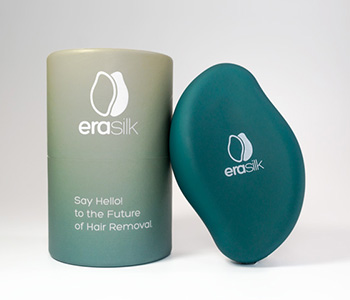I know you will agree with us when we say hair removal is an unending chore and it’s not an easy feat. There are many methods and processes out there, but which one is really for you?
Hair removal has come a long way and has certainly evolved since then, but the idea basically stayed the same. Even with all the advancements and innovations of hair removal, there is still a lot of room for improvement. Although a number of products and procedures used are now more suitable to all skin types (i.e. vegan ingredients for wax), some of these methods continue to be painful, expensive, and even harmful to a few. But that won’t stop us and hair removal will continue to be sought-after to achieve that smooth and hair-free skin we all desire.
Since there are various hair removal methods available today, you Babe should at least be aware of these methods and weigh the pros and cons of each to choose the best option for you. Ultimately, we recommend a consultation prior to doing hair removal to ensure that the safest and most effective method is chosen.

Shaving
The most common method we have all tried and have a love or hate relationship with. Razors skim the tip of the hair shaft so most shaves will only last a day or two. Shaving will go smoother if you soften your skin with warm water or use shaving cream, gel or soap with it. However, even if shaving is the easiest method to remove hair, we can name a number of cons for you. It can cause inflamed hair follicles or irritation due to unsanitized shaving tools, ingrown hairs, and razor burns or cuts with dull blades.
Tweezing
Tweezing is a basic hair removal method that is done on small areas and reserved for the minimal jobs. Tweezing is convenient in getting rid of unwanted hairs wherein you use a tweezer to pull out one hair at a time. It is suitable for shaping the eyebrows or removing remaining strands of hair from other hair removal methods used. However, it is a time-consuming and an unpleasant process. Too much plucking can also cause scarring or ingrown hairs, and believe me, that’s the con on this list.
Threading
Threading is also commonly used for small areas such as the brows and other facial hair. It uses a fine cotton or polyester thread that is coiled around the hair and it is then uncoiled to pull the hair from the root. It is quicker compared to tweezing which pulls out several hairs at a time, but it is a bit more painful.
Depilatory Creams

Although depilatories may last longer than the effects of shaving and there’s no downtown involved, the chemicals they contain can actually harm your skin if you leave the product on for too long.

Waxing
:max_bytes(150000):strip_icc():format(webp)/GettyImages-847286644-2f275dc57b62481f8a37e48b1f5d99aa.jpg)
Sugaring
Sugaring is made up of natural ingredients such as sugar, lemon juice, and water which is heated up to make a thick paste. Similar to waxing, it is applied directly to the skin against the hair growth and is quickly pulled from the root in the same direction of the hair growth. The benefit of sugaring is that it doubles as an exfoliator and prevents ingrown hairs. It does not require any sticks or strips, so you’re safe with cross-contamination. It is also highly effective in removing short and stubborn hairs in large areas and you will also notice that the hair begins to grow softer and finer (with no shaving or tweezing in between).
Both waxing and sugaring is time-consuming. If not performed properly, it can irritate the skin.
Laser Hair Removal

Electrolysis
Electrolysis is another type of hair removal technique that should be done by a dermatologist. Like laser hair removal, it also disrupts hair growth. This process involves inserting a probe into the hair follicle and sending an electric current through it which prevents hair growth and causing existing hairs to fall out.
While both electrolysis and laser hair removal are effective at removing hair for long periods of time or even permanently, they still require multiple treatments that may be costly for some. People getting these procedures look at it as a good long-term investment. However, there are still a handful who would choose to just handle the pain and be patient with the other hair removal processes so it wouldn’t hurt their budget.
Erasing

Now, this is something new to the game. It is a hair depilation tool that is made from crystalline nanotechnology that when rubbed gently on the skin, allows the hair to clump and break up from the surface of the skin. It is somewhat close to a deep shave. This process also helps exfoliate the skin, revealing smooth skin after use. While minor side effects such as redness may occur, it really helps prevent razor bumps and ingrown hairs.


You can check our review here 🙂
There you have it, Babes! There is still so much more to discover and improve in this list of hair removal methods, but we think we have given you the general outline of what to expect and experience with them. Whatever you may choose, make sure to always consider what is safe and gentle on your skin even if it might cost you a little.

































